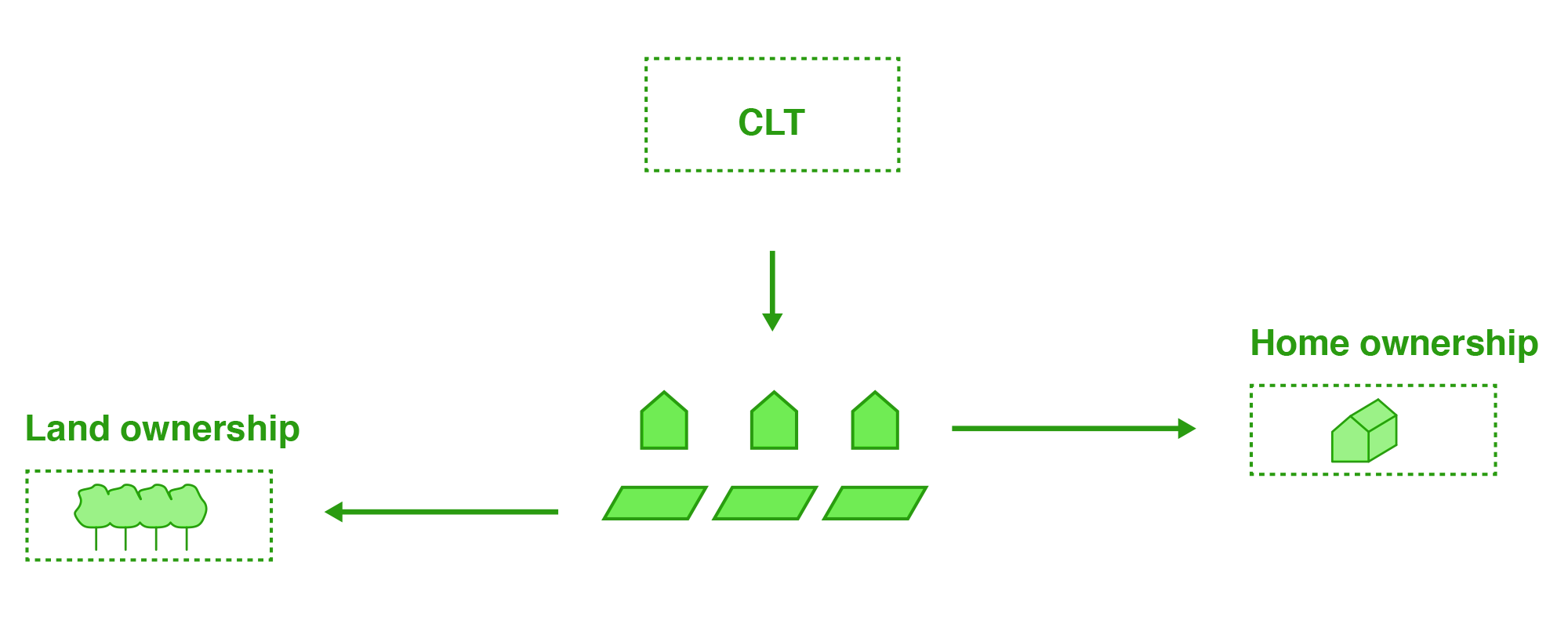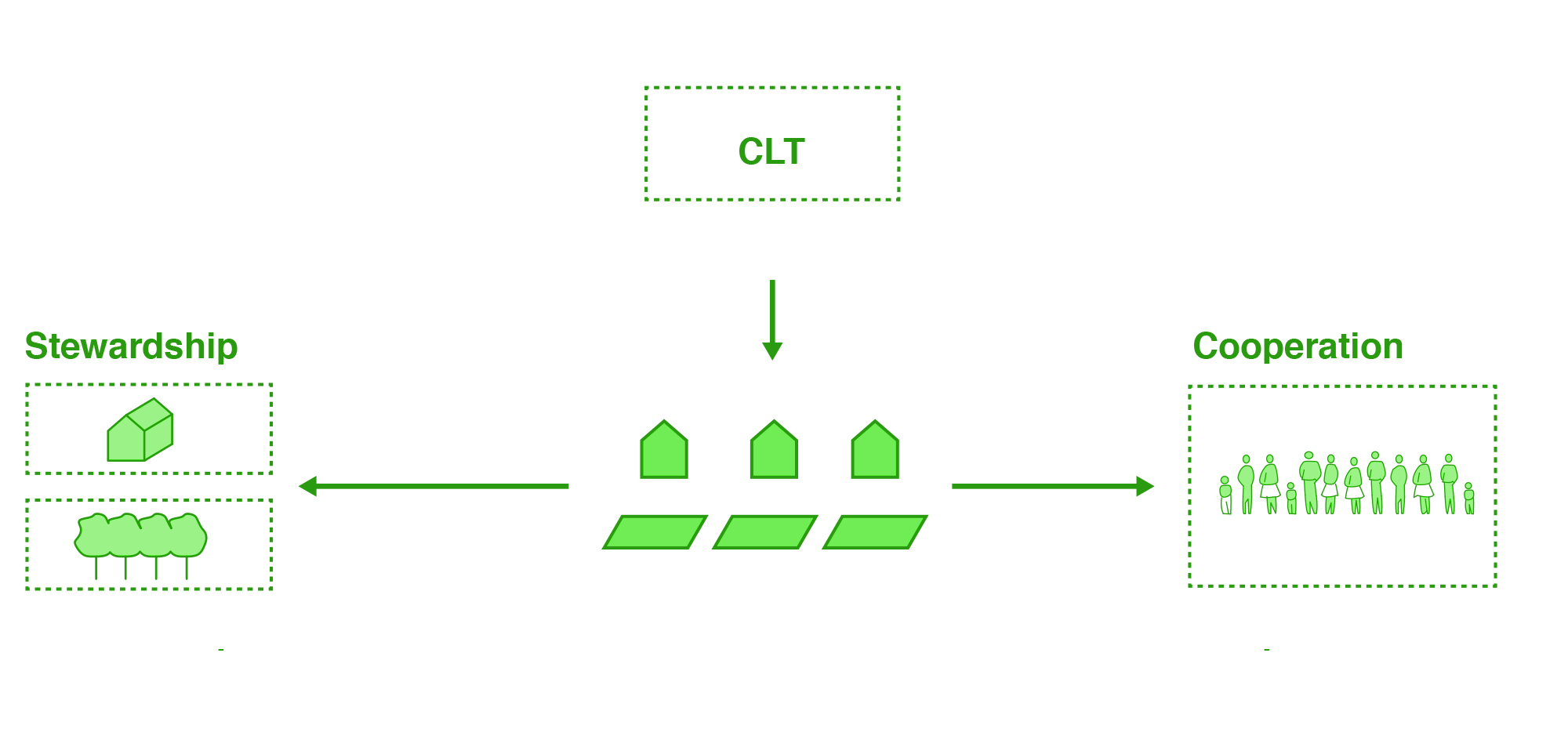The parcelization of land and its subsequent commodification separates the act of dwelling from the larger flows of energy and resources that sustain life. It is not mere rhetoric to say we are separated from nature. Land is also subdivided into the categories of public and private. Private land is managed and maintained by individuals, nuclear families, or corporate entities. Public land is managed by municipalities, states, and federal agencies. This division of maintenance—which is both a social structure and a spatial form—leads to an unevenness of care and is a direct obstacle to widespread ecological restoration. A community land trust (CLT), through collective ownership of land, provides a seed to contest these divisions. This project asks how a CLT can create new relationships within and between existing urban and community systems, and in so doing, find new ways to tackle our collective problems. A typical CLT operates through legal and financial mechanisms, creating affordability by separating the ownership of land from the ownership of a building on that land.

We propose two land-based initiatives in this document: community planting as a neighborhood carbon sequestration project and rammed earth construction as a new community building practice that can bring density without displacement. Both planting and building recognize the value of land through a new lens: its ecological value, its productive capacity, and its ability to create new social bonds through its stewardship and habitation. Community ownership in this case is not about limiting the individual use of land, but about creating strong social bonds by which individuals receive support from their neighbors. The result is a form of commoning that can exist within the bounds of conventional private property, even as it subverts its logic of individualism.
